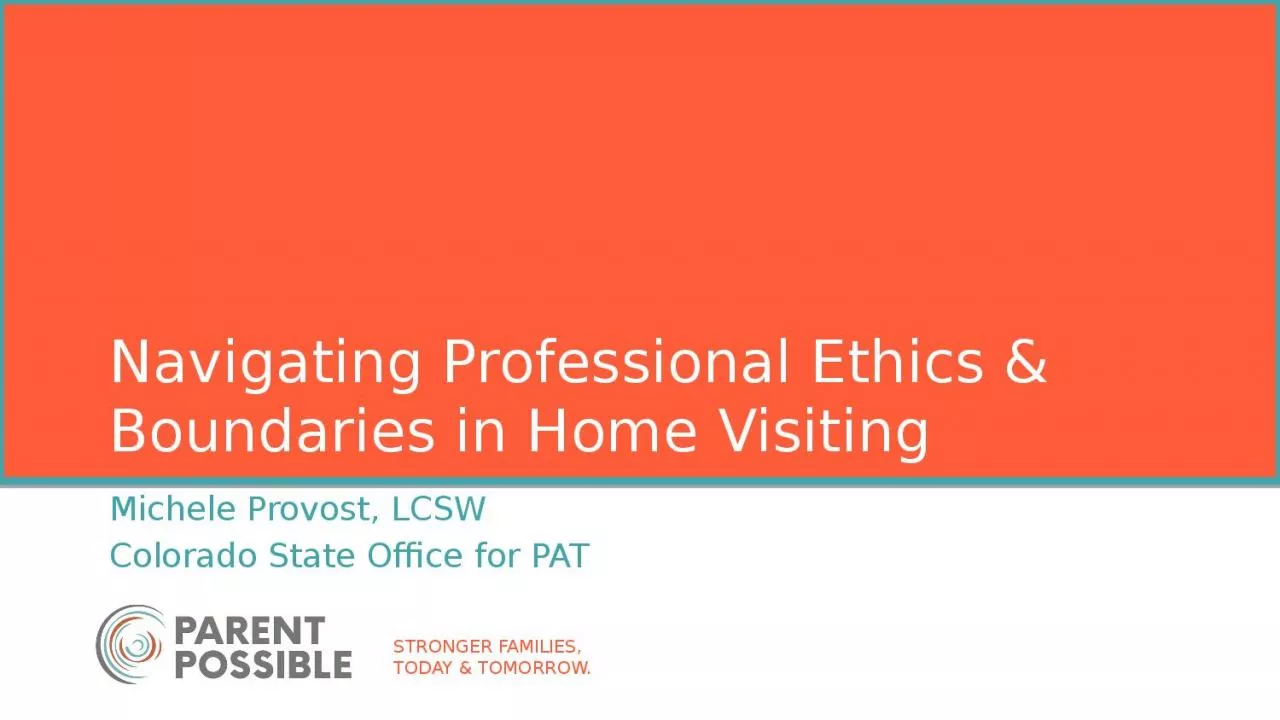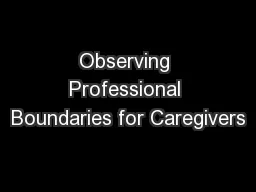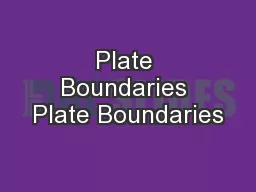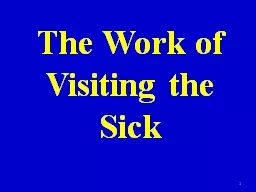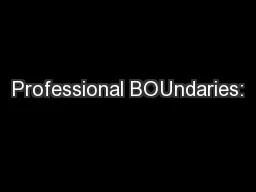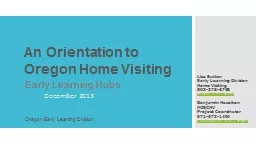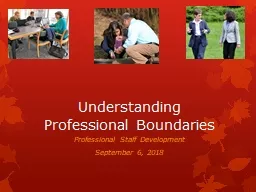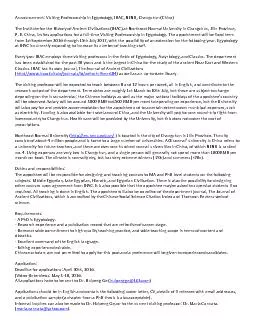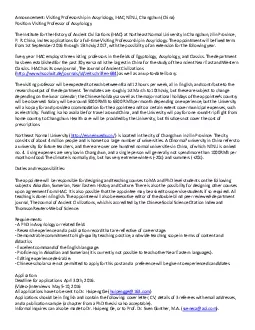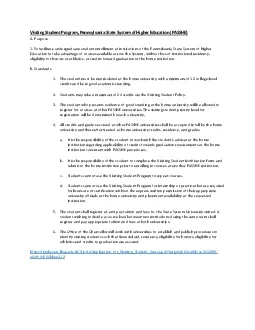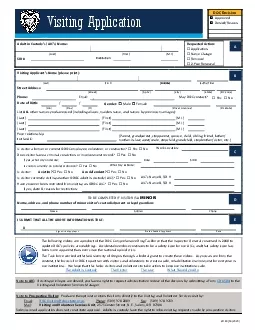PPT-Navigating Professional Ethics & Boundaries in Home Visiting
Author : miller | Published Date : 2024-01-13
Michele Provost LCSW Colorado State Office for PAT Objectives Learn why professional ethics and boundaries are important Define core concepts and terminology Examine
Presentation Embed Code
Download Presentation
Download Presentation The PPT/PDF document "Navigating Professional Ethics & Bou..." is the property of its rightful owner. Permission is granted to download and print the materials on this website for personal, non-commercial use only, and to display it on your personal computer provided you do not modify the materials and that you retain all copyright notices contained in the materials. By downloading content from our website, you accept the terms of this agreement.
Navigating Professional Ethics & Boundaries in Home Visiting: Transcript
Download Rules Of Document
"Navigating Professional Ethics & Boundaries in Home Visiting"The content belongs to its owner. You may download and print it for personal use, without modification, and keep all copyright notices. By downloading, you agree to these terms.
Related Documents

